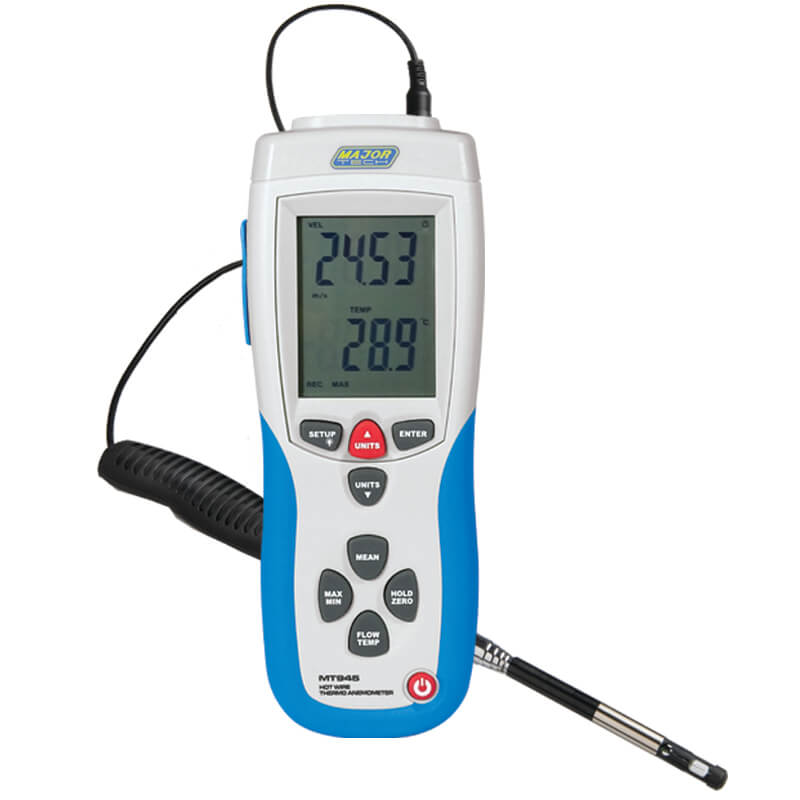Anemometer Innovations: The Most Up To Date Modern Technology for Wind Speed Dimension
Anemometer Innovations: The Most Up To Date Modern Technology for Wind Speed Dimension
Blog Article
Anemometers Unveiled: Comprehending Their Significance in Ecological Surveillance and Safety And Security Measures
The role of anemometers in ecological surveillance and safety and security actions is usually underestimated, yet their significance is obvious. From weather forecasting to aviation security, anemometers play a crucial function in giving precise data that informs decision-making procedures and enhances overall safety and security.
Background of Anemometers
The development of anemometers can be traced back to the old people where rudimentary wind measuring gadgets were first utilized. One of the earliest well-known anemometers was the hemispherical cup anemometer invented by Leon Battista Alberti in the 15th century.
In the 18th century, the distinguished scientist John Thomas Romney Robinson introduced the Robinson anemometer, which featured four hemispherical cups placed on straight arms that prolonged from a main axis. This layout came to be a requirement in meteorological measurements as a result of its accuracy and integrity. Throughout the years, improvements in technology caused the growth of more modern-day anemometers, consisting of ultrasonic anemometers and laser Doppler anemometers, providing increased precision and effectiveness in determining wind speed and direction. The history of anemometers showcases an exceptional journey of technology and development in the field of weather forecasting.
Kinds Of Anemometers
Throughout the field of meteorology, different kinds of anemometers have been created to accurately gauge wind speed and direction. The most typical kind is the cup anemometer, which includes three or 4 cups placed on horizontal arms that revolve with the wind. As the mugs spin, the rate at which they turn is directly proportional to the wind rate. An additional extensively made use of kind is the vane anemometer, which features a tail or fin that straightens itself with the wind instructions. This alignment permits the gadget to figure out the wind instructions. Sonic anemometers utilize ultrasonic signals to measure wind rate and direction precisely. They are commonly made use of in research applications due to their high accuracy. Hot-wire anemometers operate based on the principle that the cooling impact of wind on a warmed cable is proportional to the wind rate. These anemometers are appropriate for determining reduced wind rates with high accuracy. Each sort of anemometer has its toughness and is picked based on the particular demands of the monitoring job available.
Applications in Weather Forecasting
Having talked about the different kinds of anemometers used in meteorology for gauging wind speed and direction, it is vital to discover their sensible applications in the field. Anemometers play an essential role in meteorology by providing accurate and real-time data on wind conditions (anemometer). Meteorologists use anemometers to monitor wind speed and instructions to forecast climate patterns, issue warnings for severe climate events like twisters, storms, and typhoons, and evaluate climatic conditions for aeronautics safety
In weather forecasting, anemometers aid in comprehending regional and local wind patterns, which are vital for forecasting climate modifications and determining climatic patterns. These tools are additionally utilized in research study to study microclimates, city heat islands, and air pollution diffusion. Additionally, anemometers are utilized in farming to enhance plant administration methods, such as irrigation and chemical application, based on wind problems.
Value in Aeronautics Safety And Security
An essential facet of making sure aviation safety hinges on the thorough monitoring of wind conditions making use of anemometers. Anemometers play an important function in aeronautics by providing real-time information on wind rate and direction, assisting pilots in making informed choices during touchdown, trip, and liftoff. Unpredictable and strong winds can dramatically affect aircraft advice operations, making it necessary for aviation authorities to rely upon precise wind measurements to make certain the security of guests and crew.

In the vibrant setting of aeronautics, where even small changes in wind rate and direction can have extensive effects, anemometers stand as indispensable tools for promoting secure and risk-free flight.
Duty in Environmental Study
Just how do anemometers add to developments in ecological research study? Anemometers play a crucial function in environmental research by offering important data on wind speed and direction. This details is crucial for understanding numerous atmospheric processes, such as air contamination dispersion, weather patterns, and environment modification. By precisely measuring wind qualities, anemometers assist researchers evaluate the movement of pollutants in the air, assess the impact of industrial discharges, and forecast the spread of contaminants in the setting.


Final Thought
Finally, anemometers have actually played a critical duty in environmental tracking and safety and security actions. With a rich history and various kinds available, these gadgets have been extensively utilized in meteorology, he said aeronautics security, and ecological research. Understanding the value of anemometers is essential for properly determining wind rate and direction, which is vital for anticipating weather patterns, making certain risk-free air travel procedures, and carrying out ecological studies - anemometer. Their payments to these areas can not be underestimated.
One of the earliest recognized anemometers was the hemispherical mug anemometer designed by Leon Battista Alberti in the 15th century. Over the years, improvements in technology led to the growth of more modern-day anemometers, including ultrasonic anemometers and laser Doppler anemometers, providing boosted accuracy and performance in determining wind rate and instructions. Hot-wire anemometers operate based on the principle that the cooling result of wind on a warmed cord is symmetrical to the wind rate. Meteorologists make use of anemometers to keep an eye on wind rate and instructions to forecast weather condition patterns, concern cautions for severe climate events like cyclones, twisters, and storms, and evaluate atmospheric problems news for aeronautics safety and security.
Comprehending the importance of anemometers is important for properly determining wind speed and direction, which is important for forecasting climate patterns, making certain secure air travel operations, and performing ecological studies. (anemometer)
Report this page